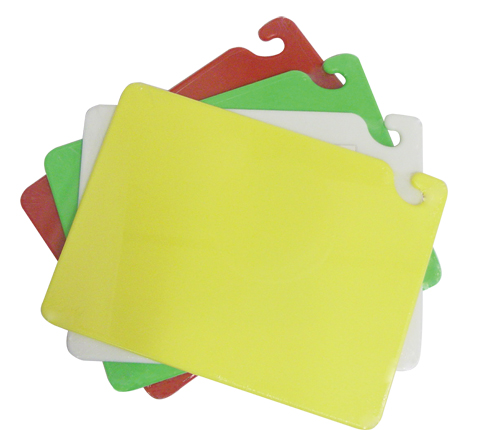 Bacteria, contaminants, and pathogens are all the enemies of your restaurant’s kitchen. It’s a battle you fight every day. The first line of defense is controlling the growth of pathogens that could make your customers sick. That is best accomplished through a robust HACCP program. Unfortunately, as effective as HACCP is at controlling pathogen growth through temperature management, there are many other areas where contamination can occur.
Bacteria, contaminants, and pathogens are all the enemies of your restaurant’s kitchen. It’s a battle you fight every day. The first line of defense is controlling the growth of pathogens that could make your customers sick. That is best accomplished through a robust HACCP program. Unfortunately, as effective as HACCP is at controlling pathogen growth through temperature management, there are many other areas where contamination can occur.
The most obvious is through food preparation equipment and utensils. Food processors, mixers, and slicers all need to be cleaned regularly with an approved sanitizer to prevent cross contamination. As for utensils, cutting boards and knives are probably the two most likely candidates for cross contamination, and it’s very important to your food safety program that you make sure different types of food are not coming in contact with each other through the use of the same utensils.
As you know, that’s easier said than done in a busy kitchen. Serving food on time is the number one priority, and, especially during the rush, your line isn’t always thinking about cross contamination first, no matter how much you train them.
Raw protein products like beef, poultry, and fish typically go with red cutting boards or knives. Raw vegetables go with green, and other food types go on white. Many restaurants will also separate poultry from other proteins and assign them to yellow utensils.
The added bonus of using color coded food prep utensils is that you also prevent taste contamination. No one wants the juices left over from a T-Bone mixed with their chicken breast in a white wine sauce. Potential allergens are also effectively separated when you assign specific foods to certain colors. Shellfish is one of the most common culprits; many people can become violently ill if their food is in even passing contact with any kind of shellfish.
Finally, color coded labels can help your staff select the right product to pull from the walk-in very quickly. Most restaurants use a First In, First Out (FIFO) policy, which is effective at prioritizing the oldest product for first use on any given day. Color coded labels (e.g. red for “use now,” green for “just arrived off the truck,” and yellow for “use soon”) make sure you minimize spoilage and use your inventory in a safe but intelligent way.
Even in the sometimes chaotic atmosphere of a busy kitchen at the peak of the dinner rush, clear color codes can help staff maintain a high food safety standard that will keep your customers safe and coming back to your restaurant for more. This is especially important in an industry where employee turnover rates are so high. A simple color code system means new hires can plug into the team quickly without you having to worry about food safety being compromised. Color coding your food preparation process will make your kitchen run more efficiently and safely, which means you’ll have more time to take care of what’s really important: your customers.
 Corner Booth Blog | TundraFMP Restaurant Supply, News & Equipment Blog
Corner Booth Blog | TundraFMP Restaurant Supply, News & Equipment Blog




What would be the color codes for pastry and baked goods?
Hi Neil,
As far as I know there’s no dedicated color for pastries/baked goods, but I think all you really need to do is designate some colors for use in a baking operation in whatever way makes sense. Even if red or yellow are typically used for raw meats they can take on a different role in a bakery.
Let say inside my chiller im using colour code, so let on monday colour code is green so what is the next colour code for the next colour
Are you trying to create a food label system? If so, the colors for each day of the week are as follows: Monday – Blue | Tuesday – Yellow | Wednesday – Red | Thursday – Brown | Friday – Green | Saturday – Orange | Sunday – Black. Tundra carries over 600 food safety labels if you are interested..